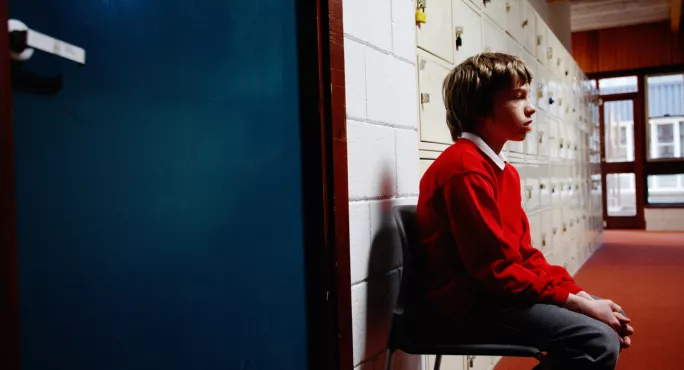
- Home
- Managed moves ŌĆśmask true scale of exclusionsŌĆÖ
Managed moves ŌĆśmask true scale of exclusionsŌĆÖ

Permanent exclusion rates are being disguised╠²by a failure to account for ŌĆ£hiddenŌĆØ managed moves, a think tank has claimed.
A lack of official data on unexplained exits from mainstream schools is masking the ŌĆ£true scale of pupil movementŌĆØ,╠².
A managed move is when a pupil voluntarily transfers from one school to another. In many╠²cases, such moves╠²are used in place of exclusions when both the family and school agree that the child in question would be better suited to alternative provision.
Ėķ▒▒¶▓╣│┘▒╗Õ:╠²Managed-move pupils ŌĆśoutperform permanently excludedŌĆÖ
Background: 55,000 ŌĆśunexplained movesŌĆÖ heighten ŌĆśoff-rollingŌĆÖ concerns
░┐┤┌┤┌-░∙┤Ū▒¶▒¶Š▒▓į▓Ą:╠²The pupils most at risk of ŌĆśunexplained moveŌĆÖ╠²
However, Cath Murray, alternative-provision lead at the CSJ, claims that some local authorities are ŌĆ£adopting a policy╠²of managed movesŌĆØ╠²in order to artificially lower exclusion rates.
Building on recent research from the╠²Education Policy Institute (EPI) think tank, analysts at the CSJ found that one in five (33)╠²local authorities recorded below average permanent exclusions, but above average rates of unexplained exits to alternative provision,╠²for the cohort of pupils who sat their GCSEs in 2017.
This suggests that the permanent exclusion rates for some areas may be significantly under-representing╠²the true number of pupils leaving mainstream education.
The impact of managed moves
For example, when the 149 [out of a total of 152] local authorities analysed in the study are ranked by permanent exclusion rates,╠²Knowsley Council comes in at number 111. However, when unexplained exits to alternative provision are included in the exclusion rate, the authority soars to number two in the list.
Knowsley recorded only 2.03 permanent exclusions per 1,000 pupils, yet 83.25 pupils per 1,000 experienced an unexplained exit to alternative provision.╠²
A similar pattern is true for Islington Council, which jumps from number 75 in the rankings to first place. It╠²recorded╠²16.49 permanent exclusions per 1,000, but its unexplained exit rate to alternative provision was╠²71.24 pupils per 1,000.
Ms Murray╠²said: ŌĆ£Looking at only the official recorded permanent exclusions for these areas masks the true scale of pupil movement.
ŌĆ£There were actually more unexplained exits into alternative provision╠²(5,589) than permanent exclusions (4,639) between Years 7 and 11 in the cohort of children who took their GCSEs in 2017.
ŌĆ£These children, who were moved on to the roll of a pupil-referral unit (PRU)╠²or alternative-provision╠²school╠²effectively received a permanent exclusion in all but name. This suggests that the true number of permanent exclusions could be more than double the published rates.ŌĆØ
It that as many as 90 per cent of pupils at some PRUs have undergone managed moves, as opposed to being permanently excluded.╠²
However, Steve Howell, head of╠²City of Birmingham School, the largest╠²PRU in the country, said this figure was ŌĆ£not representative of the majority of the sectorŌĆØ.
ŌĆ£ItŌĆÖs probably not accurate across the country,ŌĆØ he said. ŌĆ£The biggest category of PRUs are for kids that are permanently excluded.ŌĆØ
School exclusion by another name?
While Ms Murray said managed moves should be treated as permanent exclusions ŌĆ£in all but nameŌĆØ,╠²Tom Bennett, founder of researchED, said the two processes are not comparable.╠²
ŌĆ£Managed moves arenŌĆÖt exclusions,ŌĆØ he said.╠²ŌĆ£TheyŌĆÖre often exactly how children get to access PRU care without being excluded.
ŌĆ£TheyŌĆÖre vital and sensible. TheyŌĆÖre legal. As are properly administered exclusions.ŌĆØ
The CSJ is now calling on the Department for Education to╠²rethink the way it processes exclusion data, in order to form a ŌĆ£true pictureŌĆØ of how children are moved to alternative provision.
Ms Murray said: ŌĆ£Alongside the permanent exclusion╠²rate, the DfE should publish the rate of moves into alternative provision. And the headline figure should be the combined rate, to acknowledge the fact that a permanent move on to the roll of an alternative provision╠²is an exclusion by another name.
ŌĆ£ItŌĆÖs a simple change for the DfE, but one that would remove the incentive for local authorities, schools or multi-academy trusts to use administrative tricks to hide the real picture of school exclusions.ŌĆØ
A DfE spokesperson said:╠²╠²ŌĆ£Excluding a pupil from school should only ever be a last resort, but we will always back heads and teachers to bring discipline to the classroom for the benefit of every childŌĆÖs education.
ŌĆ£The education secretary has been clear since joining the department that his ambition is exactly the same for pupils excluded from school and being taught in alternative provision╠²as it is for those in mainstream education.
ŌĆ£We are investing in alternative provision to raise standards and channelling the innovation and expertise already in the system so we can break the mould for these young people and transform their lives.ŌĆØ
╠²
Want to keep reading for free?
Register with Tes and you can read five free articles every month, plus you'll have access to our range of award-winning newsletters.
Register with Tes and you can read five free articles every month, plus you'll have access to our range of award-winning newsletters.
Keep reading for just ┬Ż4.90 per month
You've reached your limit of free articles this month. Subscribe for ┬Ż4.90 per month for three months and get:
- Unlimited access to all Tes magazine content
- Exclusive subscriber-only stories
- Award-winning email newsletters
You've reached your limit of free articles this month. Subscribe for ┬Ż4.90 per month for three months and get:
- Unlimited access to all Tes magazine content
- Exclusive subscriber-only stories
- Award-winning email newsletters



